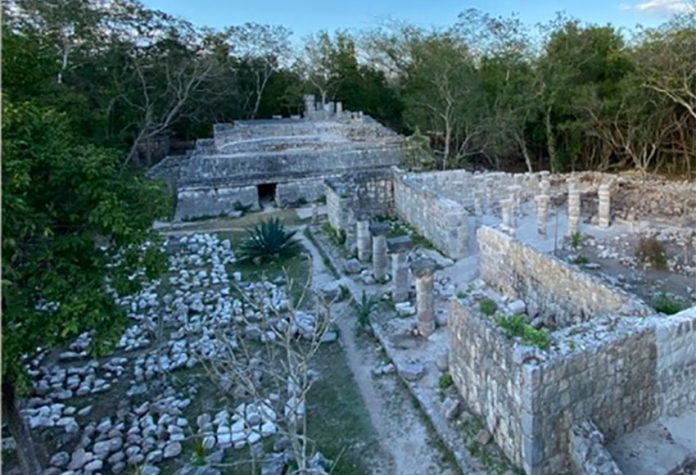A new section of the Chichén Iztá archaeological site will open to the public in 2022, the National Institute of Anthropology and History (INAH) has announced.
Called Chichén Viejo, or Old Chichén, the new section is set deep in jungle in an area 900 meters south of El Castillo, the towering pyramid that is the largest structure of the ancient Mayan city, located about 40 kilometers west of Valladolid, Yucatán.
“This new space represents a formidable experience because it’s embedded in the jungle,” Marco Antonio Santos, director of the Chichén Itzá site, told the newspaper Milenio.
“It’s a kind of neighborhood that contains temples and palaces whose decorations evoke scenes that are possibly from the Popol Vuh,” he said, referring to a text that recounts the mythology and history of the K’iche people, who are part of the Maya.
“In other words, [scenes] from the creation of the cosmos. Here [in Chichén Viejo] priests officiated at and performed rituals related to fertility and primal divine deeds.”
Santos said that exploration work in the new section that was halted in 2020 due to the coronavirus pandemic will resume in 2021 to prepare it for its opening to the public next year.
However, vegetation covering some of the structures will not be removed, the INAH archaeologist said.
In the past vegetation at archaeological sites was completely removed but “we realized that was a serious mistake because we were removing the skin that protected the sites,” Santos said.
“What we’re seeking now is a balance between archaeological research and protection of the jungle,” he said.
“… We want people to see … a Mayan palace in the middle of the original flora. … With the [coronavirus] lockdown, the jungle has regenerated, we’ve seen deer and jaguars return to Chichén Itzá,” Santos said.
The INAH archaeologist said that people interested in visiting Chichén Viejo will have to make a reservation because entry will be limited to numbers well below those who usually visit the main site on a daily basis.
He explained that Chichén Itzá was an enormous city covering around 20 square kilometers and that even with the opening of the new section only 3% will be accessible to the public.
Santos said that about 2.5 million people visited the site in 2019 but numbers fell to approximately 950,000 last year due to the pandemic. He predicted that annual visitor numbers will increase significantly once the Maya Train railroad, which will have a station near Chichén Itzá, is operational.
(The railroad, which will run through Tabasco, Campeche, Yucatán, Quintana Roo and Chiapas, is currently under construction and scheduled to begin operations in 2023.)
“We’re certain that with the Maya Train, those 2.5 million visitors [we had in 2019] will multiply exponentially,” Santos said.
Source: Milenio (sp)
